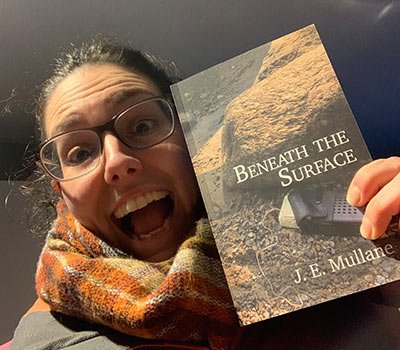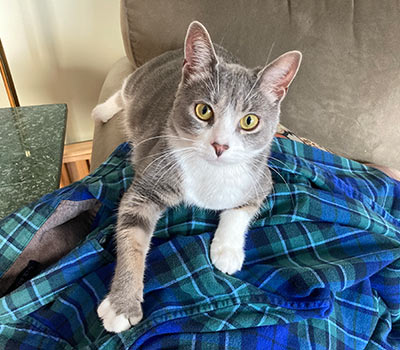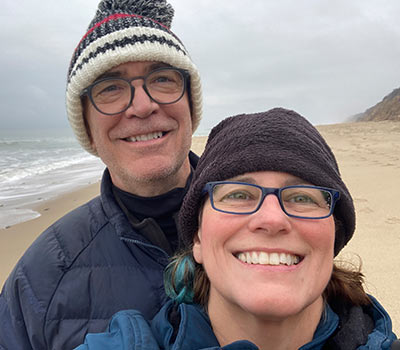
Where do you get your ideas? Over the years I have seen or read quite a few author interviews and this question always pops up in one form or another. I have a vision of the author rolling his or her eyes, gritting their teeth, trying to be as pleasant as possible while answering a question they are patently sick to death of. So, it may seem strange that after my first novel was published and I was actually asked that question myself, I was totally unprepared as to how to address it. The truthful answer to the question of where I get ideas is “everywhere”, but I knew that would sound pretty lame. I thought for a second, then answered truthfully and said I got them from places, characters I see, and atmosphere. They each play a large role in ideas. Oh, and theme. Yeah, theme is a big one. No one really understands it, but it’s big. I could almost see various sets of eyes glazing over either in boredom or incomprehension. So, I’m not going to do that here. Not exactly.
My first novel, Beneath the Surface, takes place in Pendale, a small New Jersey town. If I chose to, I could identify the real-life town Pendale is based on, because it was the town I lived in when I was a small boy, just about the age of one of the book’s characters, Eddie McConnell. Much of the overall vibe of the town, what is reflected in the words, thoughts, and actions of the inhabitants, is what I felt when I lived there. Eddie doesn’t understand a lot of it, neither did I. But having experienced the place firsthand, through my very young eyes, it wasn’t difficult creating what I hope was a convincing portrait of the town. The waterfront, where the initial crime takes place, with its rotting fish, shrieking gulls, and garbage on the shore—been there. Seen it, heard it, smelled it. Great place for a crime. The decrepit house belonging to a very damaged Vietnam veteran was the house across the street from mine, right down to its sagging front porch. Another house I described in detail was my grandmother’s house. The inside of it anyway. And the little guy, Eddie? He lived in the same house I did. Exactly the same. These places are where the story takes place. And that’s called setting. Neat, huh? Toss in when the story takes place, and you’ve got an even stronger setting. Beneath the Surface takes place in 1968, one of the most turbulent years in our country’s history. Vietnam, Civil Rights, assassinations, Women’s Rights, protests, riots…. A lot was happening and, hopefully, it added to the atmosphere. Coupled with my real memories of “Pendale”, that’s a lot to write about.
The book opens with a racially motivated crime. This was my inciting incident, related to the vibe I referred to earlier. During the time I lived in the town, I saw and heard a lot of fear and hate directed at certain people. Maybe the memories are enhanced a bit because I was so young and it made such a strong impression on me, I’m not sure. Either way, the majority population seemed to distrust and fear the newcomers. I don’t think Pendale was or is any different from thousands of other towns across the country. It simply was the place where I soaked up these feelings along with everything else my sponge-like brain experienced. Fear, distrust, hate. Living it and, as an adult author, addressing how a small boy, along with others, can learn and grow despite it. Yes, the novel has death, infidelity, red herrings, all those neat items found in mysteries. But the main idea woven throughout the story, the theme (There it is!) is about how to deal with the unknown and hopefully grow into a better person while doing so.
Have you ever been in a store or restaurant and heard someone express an opinion you could not believe they actually chose to voice aloud? Or experienced a frustrated mother exhibiting some parenting techniques that made you extremely uncomfortable? Did you think, my God, I wonder what life is like in that house? I have, and not just when observing negative behavior. As an author though, the negative certainly offers more to write about. To me anyway. The person who chose to share that incredibly disgusting opinion in the restaurant? You don’t need to tell me, “This person is not a nice man.” His words have already shown me that. The young parent giving her child a good shake or smack? I don’t need to hear, “This woman is very impatient and can be easily frustrated.” NO KIDDING. A character’s words show the kind of person they are. Their actions show the same. Toss in what the character is thinking, because often when reading you will know this, and you’ll have a nicely detailed picture of a character. And this is WITHOUT anyone taking you by the hand and telling you what kind of person he or she is. You know already—you’ve heard his words; you’ve seen her actions. And if you could read the thoughts of the guy in the checkout line in front of you, you’d know he doesn’t like the kid in line two people ahead of him, he’d like to boot the cashier in the butt to get her moving faster, and he can’t wait to get to his girlfriend’s so he can spend some quality time before having to go home to his wife. Do you really need anyone spelling out this guy for you? His thoughts told you. As an author, it’s fun putting these people in my stories. I see them everywhere, we all do. I just tweak them a bit, put them to work, and they do exactly what I want.
So where do I get ideas? My old house, my grandmother’s house, a smelly waterfront, the impatient guy in front of me in the checkout line, the frustrated mother, that feeling I still get when I think of my old town. Yup, everywhere.












